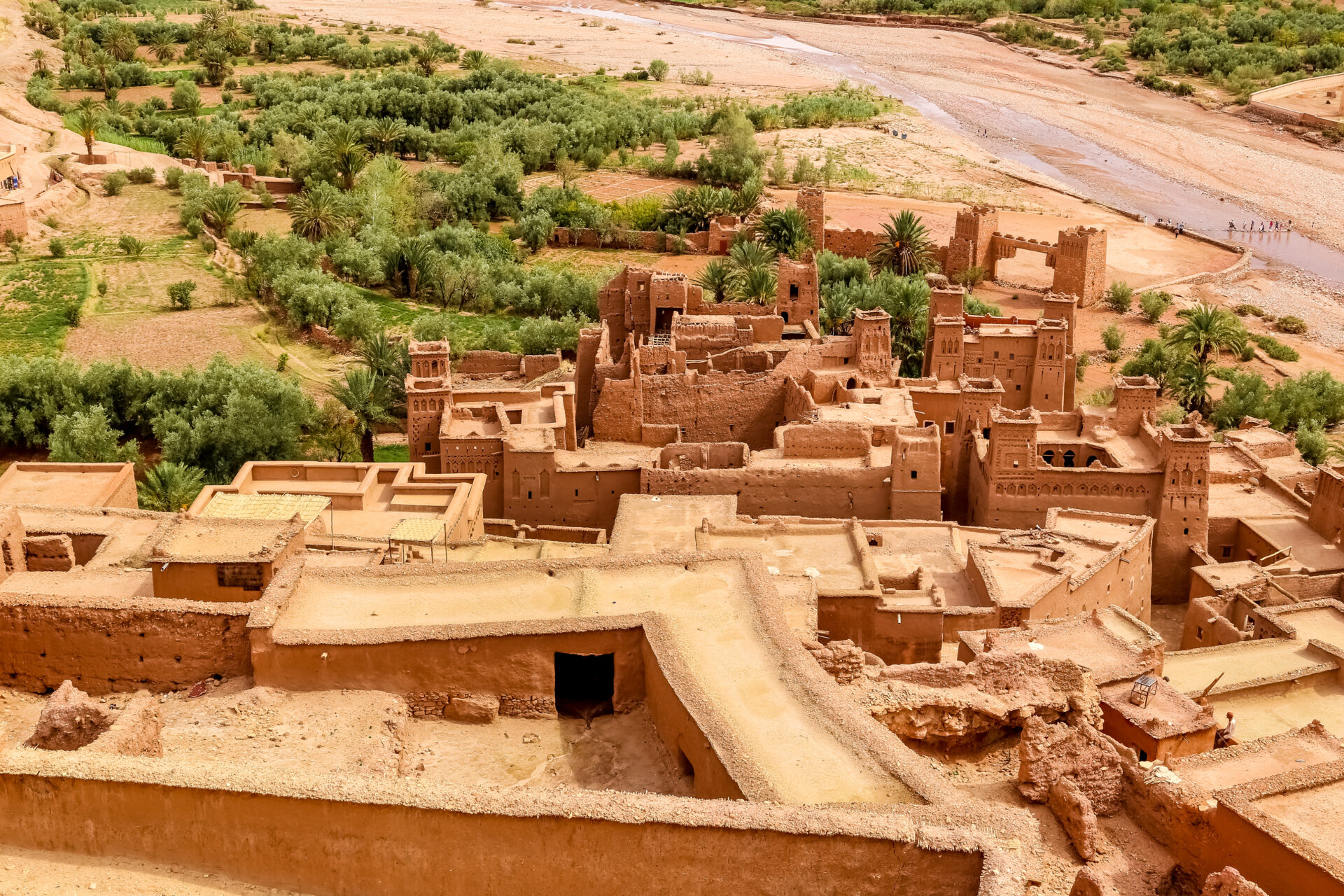
Introduction
The GCC boasts an impressive 17 UNESCO World Heritage Sites, along with a diverse array of smaller palaces, forts, mosques, historic neighborhoods, and heritage villages. Over the last 10 years, countries in the region have worked to restore, enhance, and promote these sites as part of their national strategies to boost tourism, diversify their economies, and develop their cultural sectors. These investments are already bearing fruit, with flagship destinations such as Diriyah (Saudi Arabia), Al Ain Oasis (UAE), and Souq Waqif (Qatar) attracting hundreds of thousands of visitors each year.
UNESCO World Heritage Sites in the GCC

While the growth of heritage tourism represents an exciting economic opportunity for the region, it also poses significant challenges. Governments need to take safeguards to ensure that the rising number of visitors does not lead to damage from erosion, littering, vandalism, and other threats. More broadly, growing tourism also poses challenges for national environmental strategies by threatening plant and animal life and increasing pollution. As such, it is also crucial for authorities to invest in preserving surrounding ecosystems and minimizing energy consumption.
Potential Impacts of Sustainability Initiatives by 2030

Sustainable approaches are not just about mitigating damage. A 2023 study by PwC estimated that, as consumers become more environmentally and socially conscious, “sustainable cultural assets and events could attract an additional 8 million visits to the (MENA) region by 2030”. Furthermore, as international investors increasingly prioritize sustainability concerns, countries promoting conservation and environmental protection will be well-positioned to attract new inflows of FDI. Improved energy efficiency, use of recycled materials, and automated monitoring systems can also reduce operational costs, improving the financial viability of heritage destinations. In short, sustainability can support growth even as it protects historical sites and natural environments.
GCC countries have been quick to recognize the importance of sustainable development of heritage tourism. Conservation, ecological and environmental protection, and social welfare are key pillars in national tourism strategies and underpin the work of heritage authorities across the region. In this article, we will explore some of the innovative approaches and initiatives which have been launched in recent years, highlighting innovative technologies, development models, and projects.
Sustainability through Technological Innovation
Authorities are increasingly turning to emerging technologies to protect heritage sites and promote environmental sustainability. A prominent example of this trend is Saudi Arabia’s Diriyah Gate Development Project. Located on the outskirts of Riyadh, this ambitious project includes the restoration of the UNESCO World Heritage Site At-Turaif, and the development of museums, cultural institutions, luxury hotels, and high-end retail spaces. In 2024, the project signed a strategic partnership with telecommunications company STC to provide smart sensors, artificial intelligence, cloud services and other advanced technological solutions to protect the site. This was followed by a further agreement with Hewlett Packard which encompassed a suite of sustainability technologies and technical data services. With hundreds of thousands of visitors already travelling to Diriyah every month, these new technologies will help to preserve the site’s invaluable heritage for future generations by monitoring and preventing damage.
New technologies are also being used to digitally preserve heritage assets. A government-funded research project led by Qatar University and Brunel University (UK), for instance, integrates 3D modelling, artificial intelligence, and advanced data analytics to develop new methods for digitally preserving Qatar’s cultural heritage. This and similar projects create accurate digital models of buildings and artifacts, facilitating sustainable protection, restoration, research, and dissemination of heritage assets.
Green technologies are also helping to reduce the carbon footprint of heritage tourism destinations. In Saudi Arabia’s Al Ula, which houses a major UNESCO World Heritage Site, green technologies have been implemented including the world’s longest battery-powered tramway, environmentally friendly construction techniques, advanced waste management technologies, and energy-efficient lighting. These technologies ensure that Al Ula’s growth aligns with Saudi Arabia’s national environmental objectives.
Restoring and Reusing Historic Buildings
Another important technique to promote environmental sustainability is the adaptive reuse of historic buildings. This practice involves restoring buildings for new purposes while preserving their significant architectural features. This provides multiple benefits, including delivering essential repairs for heritage sites, providing valuable new public spaces for citizens, and encouraging greater engagement with historic buildings.
The UAE’s Al Jahili Fort provides an example of successful adaptive reuse. Originally built in the late 19th century as a royal summer residence, the fort was recently rehabilitated under the supervision of the Abu Dhabi Department of Culture and Tourism. Today, parts of the fort have acquired new life as an exhibition space and visitor center, providing the building with a fresh relevance and encouraging visitors to explore this fascinating historical site. Similarly, in the traditional pearling city of Muharraq in Bahrain, numerous derelict historical buildings have been restored and repurposed as cultural centers, food and beverage outlets, and public spaces, revitalizing the historic neighborhood and preserving valuable heritage assets.
Engaging and Empowering Communities
Sustainable heritage conservation involves local communities, ensuring that they benefit from and actively participate in preservation efforts. Community engagement initiatives include educational programs, local employment opportunities, and participatory decision-making processes. This inclusive approach fosters a sense of ownership and responsibility towards sites among local populations, which is essential for the long-term sustainability of heritage tourism.
One effective mechanism for community engagement is holding heritage festivals in historic sites. Oman, for example, organizes an annual cultural festival at Bahla Fort, one of the country’s 5 UNESCO World Heritage Sites. This festival provides local employment, offers educational programs and workshops for children, and helps to promote artisans and craftsmen. Other countries foster community engagement through long-term programs and centers. The Royal Commission for Al Ula, for instance, has launched the Integrated Design & Craft Education Programme, a creative and educational hub which provides training, public events, children’s activities, and workspaces for the local community.
Looking to the Future
As the number of visitors travelling to GCC countries continues to grow, the challenges presented by heritage tourism are likely to become more complex. While several countries have already made impressive progress by embracing new technologies and implementing effective safeguards, governments will need to continue to adopt innovative new approaches to protect their history, communities, and the environment for future generations.
References:
- Ministry of Municipal and Rural Affairs and Housing (2024)
- Oman Observer (2024)
- Diriyah Company (2024)
- Arab News (2024)
- PwC (2023)
- Construction Week (2023)
- Identity (2020)
- Virtual Multimodal Museum (2019)
- The King’s Foundation (n.d.)
Related articles

Full Throttle: The GCC’s Big Bet on Motorsport Excellence

Fan Engagement in Sports: The Advent of Artificial Intelligence


